- Author: Mike Hsu
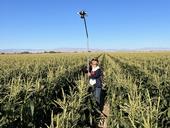
Study by UCCE advisor in Imperial County also shows 5% increase in yield
A new study suggests that drip irrigation for sweet corn can significantly conserve water, reduce fertilizer use and boost crop yield in the low desert of California – and likely in other areas of the state with similar conditions.
Although Imperial County is California's top sweet corn-producing county, with about 8,000 acres planted on average each year, irrigation methods for this crop have been rarely studied in this region (or anywhere else in the state), according to Ali Montazar, UC Cooperative Extension irrigation and water...
- Author: Emily C. Dooley, UC Davis
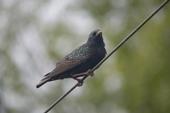
E. coli and Salmonella are rare in wild birds, Campylobacter more common
Concerns over foodborne risk from birds may not be as severe as once thought by produce farmers, according to research from the University of California, Davis, that found low instances of E. coli and Salmonella prevalence.
While the research found that the risk is often low, it varies depending on species. Birds like starlings that flock in large numbers and forage on the ground near cattle are more likely to spread pathogenic bacteria to crops like lettuce, spinach and broccoli, according to a study of food safety risk and bird pathogens from the University of...
- Author: Diane Nelson
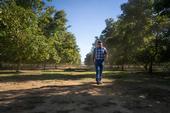
When it comes to watering walnuts, most California growers believe you need to start early to keep trees healthy and productive throughout the long, hot summer. But according to striking results from a long-term experiment in a walnut orchard in Red Bluff, growers can improve crop production if they hold off irrigation until later in the season and directly measure their trees' water needs.
The findings from researchers at the University of California may help farmers optimize water use.
“It's a game-changer,” said walnut grower Hal Crain, who welcomed researchers on to his orchard to test irrigation optimization. “It's clear to me you can improve nut quality and yield by applying water based on what...
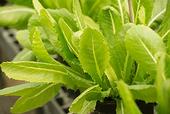
Can you help fight the California drought by consuming only foods and beverages that require minimal water to produce?
Well, as the old saying goes, the devil is in the details. In a recently published paper, Daniel Sumner, director of the UC Agricultural Issues Center at UC Davis, and research assistant Nina M. Anderson mine the details of this issue to help us all better understand just what impact our food choices can have on conserving California's precious water.
To begin with, not all water drops are equal because not all water uses impact California's drought, the researchers explain.
Drought-relevant water
So just what water does...
- Author: Iqbal Pittalwala
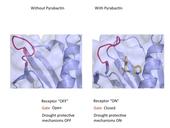
At 925 million, the number of hungry people in the world is unacceptably high.
To combat world hunger, many scientists are working on developing crops that can resist disease and withstand the elements, from drought to floods. One such scientist is Sean Cutler at UC Riverside, whose breakthrough discovery last year of pyrabactin has brought drought-tolerant crops closer to becoming reality and spawned new research in several labs around the world.



